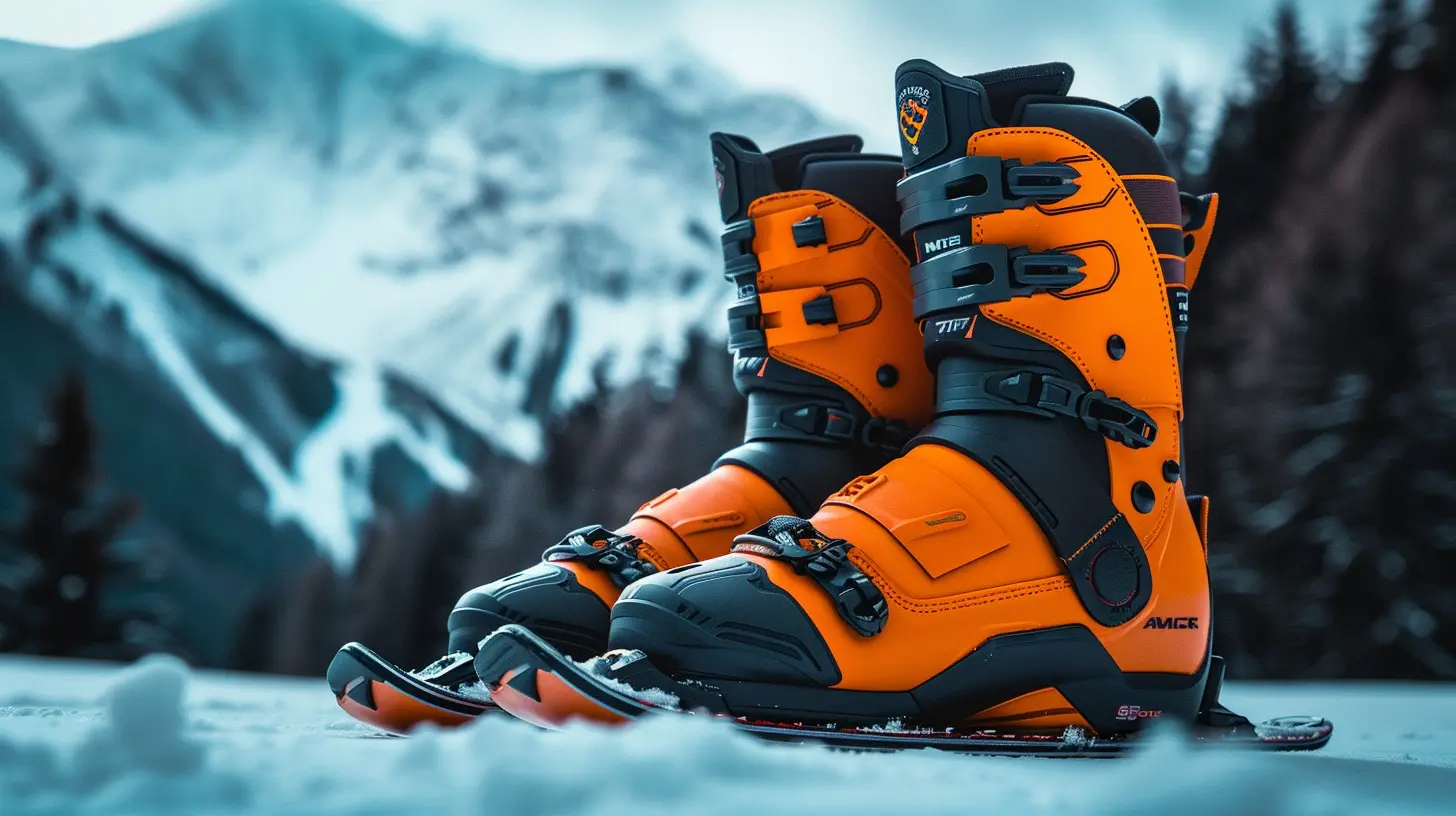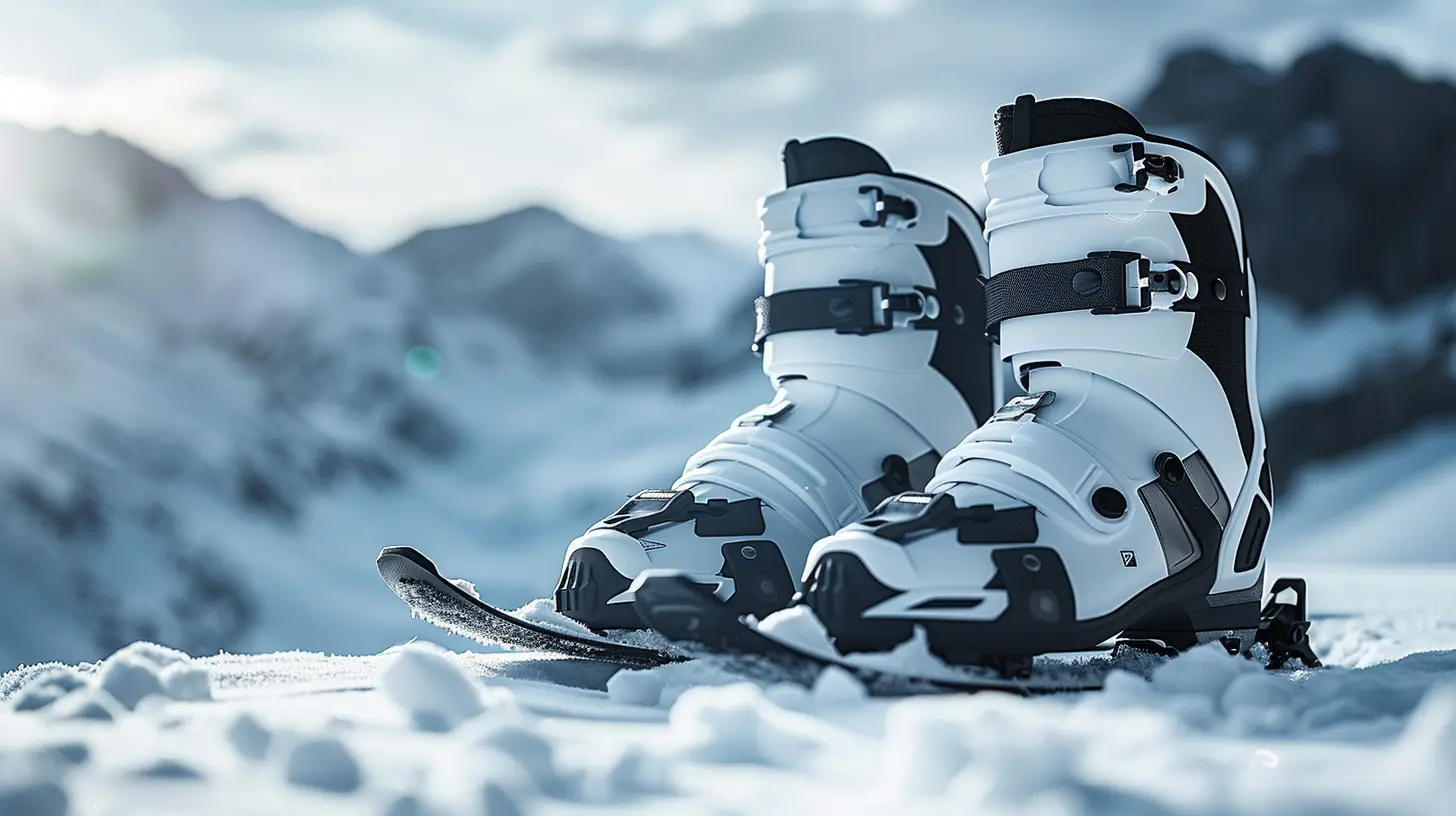How to Choose the Best Ski Boots for Comfort and Performance
17 June 2025
Ah, ski boots—the unsung heroes of your mountain adventures! A good pair can make your day on the slopes feel like a dream, while the wrong ones? Let’s just say, they’ll turn your skiing experience into a nightmare of blisters and frustration.
Picking the best ski boots isn’t just about finding the flashiest pair or the ones your favorite athlete wears. It’s about comfort, performance, and a perfect fit for your unique feet. So, if you've ever struggled with sore toes or numb feet after just a few runs, this guide is for you.
Let’s dive into everything you need to know to choose the best ski boots, from fit to flex and everything in between! 
Why Ski Boots Matter More Than Skis
You might think skis are the biggest factor in your performance, but guess what? Ski boots are even more crucial. They connect your body to the skis, transferring every movement and adjustment you make. A poor fit can mean loss of control, discomfort, and unnecessary fatigue.Imagine trying to run a marathon in shoes two sizes too big or way too tight—sounds terrible, right? That’s exactly what happens when you don’t get the right ski boots. 
Step 1: Know Your Ski Boot Fit
The first and most important factor when choosing ski boots is the fit. A proper fit ensures both comfort and performance, helping you ski longer without pain.Understanding Ski Boot Sizing
Ski boots use Mondopoint sizing, which is based on the length of your foot in centimeters. So, if your foot measures 27cm, your ski boot size is roughly 27.0.However, fit isn’t just about length. You also need to consider the width, referred to as the last width:
- Narrow (97-98mm last): Best for skiers with slim feet or those looking for a precision fit.
- Medium (100mm last): Suitable for most skiers with average foot width.
- Wide (102-104mm last): Designed for those with broader feet who need extra space.
Snug But Not Painful
Your ski boots should feel snug—like a firm handshake for your feet. They shouldn’t squeeze so tightly that you lose circulation, but they also shouldn’t have excess space.Pro tip: When you first try on new ski boots, they’ll likely feel a little tight. Ski boot liners pack out over time, so they naturally loosen up after a few days of skiing. 
Step 2: Choosing the Right Flex for Your Skill Level
The flex rating of a ski boot determines how stiff or soft it feels when you bend your ankles. Picking the right flex is key to maximizing your performance.What Is Flex Rating?
The flex rating is a number that typically ranges from 60 (soft) to 130+ (very stiff). Here’s how to determine what’s best for you:- Beginner (60-80 flex for men, 50-70 for women)
- Softer boots make it easier to turn and stay comfortable for learning skiers.
- Intermediate (80-100 flex for men, 70-90 for women)
- A balanced mix of flexibility and support for progressing skiers.
- Advanced & Expert (100+ flex for men, 90+ for women)
- Stiff boots provide maximum control and performance at high speeds.
If you're unsure, start with a slightly softer boot. A boot that’s too stiff can make skiing harder than it should be. 
Step 3: Consider Your Skiing Style
Your skiing style plays a huge role in the type of boots you should choose. Do you love carving on groomed runs, or are you more of a powder chaser?- All-Mountain Skiers → Look for medium flex boots (80-100) with a comfortable fit.
- Freestyle/Park Skiers → Opt for softer flex boots (60-90) for easy maneuverability.
- Big Mountain & Freeride Skiers → Choose stiffer flex boots (100+) for added control and power.
Step 4: Check the Boot Liners
Ski boot liners are the inner padding that provides warmth and comfort. They also play a role in how well your boots fit.Types of Ski Boot Liners:
1. Standard Liners → Pre-shaped and offer decent comfort but can pack out over time.2. Heat-Moldable Liners → Can be custom molded to your feet for a precise fit.
3. Fully Custom Liners → High-end option tailored completely to your feet for the best feel.
If comfort is a priority, heat-moldable or custom liners are worth the investment.
Step 5: Buckles and Straps Matter
A good ski boot isn’t just about fit—it’s also about adjustability. Most ski boots have buckles and a power strap to secure your foot.- More buckles (3-4 per boot) provide better hold and customization.
- Micro-adjustable buckles allow fine-tuning for the perfect fit.
- A firm power strap at the top of the boot improves responsiveness.
If your boots feel loose, adjusting the buckles correctly can make a world of difference.
Step 6: Try Before You Buy
Before committing to a pair, always try on ski boots with the socks you’ll be wearing on the slopes. Walk around, do some flexing motions, and pay attention to pressure points.Key signs of a great fit:
✔ No painful pressure points
✔ Toes gently touch the front when standing but pull back when flexing
✔ Snug heel hold (your heel shouldn't lift when bending your knees)
If you’re unsure, many ski shops offer boot fitting services to help you find the perfect match.
Step 7: Consider Aftermarket Customization
Even the best ski boots might need a little extra tweaking for ultimate comfort. If you're experiencing discomfort, consider:- Custom footbeds or insoles → Improve support and alignment.
- Boot punching or stretching → Helps with tight spots or pressure areas.
- Aftermarket liners → Enhance warmth and comfort.
A well-fitted boot can take time to break in, so don’t be afraid to make adjustments as needed.
Final Thoughts: Your Comfort = Your Performance
Choosing the best ski boots is about balancing comfort and performance. The right boots will fit snugly, provide the right amount of flex, and improve your confidence on the slopes.Remember, happy feet = happy skiing! Take the time to find the perfect pair, and you’ll enjoy more effortless turns, longer days on the mountain, and way fewer foot aches.
Now, hit the slopes with boots that feel like a dream, and let the good times roll!
all images in this post were generated using AI tools
Category:
SkiingAuthor:

Nelson Bryant
Discussion
rate this article
2 comments
Heath Cook
Great article! Your insights on balancing comfort and performance in ski boot selection are invaluable. It's often overlooked, but proper fit can greatly enhance the skiing experience. Thanks for sharing these helpful tips for both beginners and seasoned skiers alike!
November 17, 2025 at 3:58 AM
Archer McFadden
Choosing ski boots requires balancing fit, flex, and purpose; prioritizing comfort enhances performance and enjoyment on the slopes.
June 22, 2025 at 3:04 AM

Nelson Bryant
Absolutely! Comfort is key for optimal performance on the slopes. Prioritizing fit and flex tailored to your skiing style makes all the difference.


